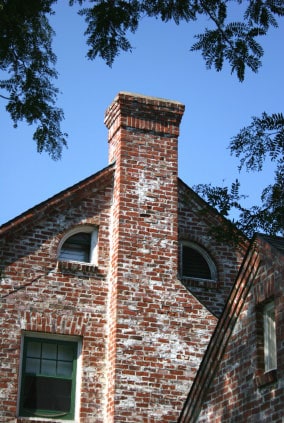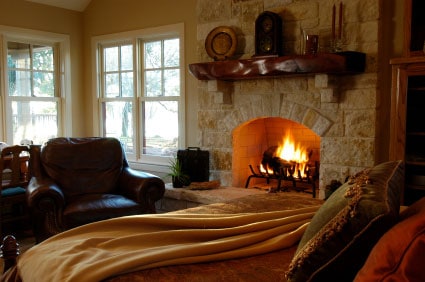Prevention key to fireplace safety, lower home insurance rates
With cold weather chilling people across the country, many Americans are loading up their fireplaces with logs and setting cozy fires. Although such fires are a source of warmth, they also can be a source of catastrophic damage, prompting experts to warn homeowners about warding off disaster.
In 2008 — the last year for which figures are available — about 24,300 home fires involving fireplaces and chimneys were reported in the United States, causing $246 million in property damage, according to the National Fire Protection Association.
Damage caused by fire and smoke would be covered under a standard homeowner’s insurance policy, says Claire Wilkinson, a vice president at the Insurance Information Institute. Your policy also would cover water damage that resulted from extinguishing a blaze, Wilkinson says.

However, you might suffer a financial blow if you’re under-insured, since you’d have to come up with money out of your pocket to replace some of your belongings. “Our advice to homeowners is to buy enough insurance to rebuild the home and replace personal possessions,” Wilkinson says.
Before a fire or any other catastrophic event strikes, it’s important to create an inventory of what you own and talk to a homeowner’s insurance agent or broker about whether you’re sufficiently covered to replace all of your possessions, if need be, Wilkinson says.
Err on the side of caution
Of course, the best way to avoid racking up fire-related damages is to prevent fires from occurring in the first place. The biggest contributor to fireplace and chimney fires is failure to clean the fireplace and chimney properly, according to the National Fire Protection Association.
One particular problem is the buildup of creosote, an oily flammable substance that’s produced when wood does not completely burn. It rises up and can deposit itself along the chimney wall, potentially sparking a fire if ignited. The National Fire Protection Association estimates that 23 percent of home heating fires are related to creosote buildup, causing $33 million in property damage each year. Other causes of chimney and fireplace fires include putting combustibles too close to the fireplace, and deficiencies in fireplace installation and construction.
To reduce the risk of a chimney or fireplace blaze, the Chimney Safety Institute of America and National Fire Protection Association recommend that every fireplace owner have his chimney inspected each year, even if the fireplace is rarely used.
“Most people associate the risk being entirely from the frequent use of the fireplace, and that’s not always the case,” says Ashley Eldridge, director of education for the Chimney Safety Institute of America. Not only would an inspection find soot buildup, but it could identify functional problems or even a squirrel’s nest lodged inside the chimney.
Homeowners should expect to pay between $100 and $300 for an inspection and a chimney sweep, Eldridge says. During a chimney sweep, any soot or creosote is removed from the chimney’s venting system.

Some people burn chimney cleaning logs, which can cut down on the amount of creosote that builds up in the chimney. However, the logs can’t identify other chimney-related problems, such as ventilation issues that could lead to carbon monoxide poisoning. Therefore, experts warn against using cleaning logs in lieu of an inspection.
“There’s no substitute for getting eyes on the chimney,” Eldridge says.
Even if an uncontrolled fire starts in the fireplace or chimney, you can take steps to keep the fire from spreading inside the home, says Judy Comoletti, a spokeswoman for the National Fire Protection Association.
- Place a sturdy screen in front of the fireplace to stop sparks from flying into the room.
- Keep anything that can burn, such as any sort of paper, at least 3 feet away from a fireplace.
- Designate 3 feet around the fireplace a no-kids zone.
When starting a fire in a fireplace, use newspaper or kindling wood, Comoletti says. “Never use flammable liquids, such as lighter fluid, kerosene or gasoline, to start a fire,” she says.
Cashing in on safety
Safety reasons aside, there are financial incentives for prevention of a major fire loss — namely insurance discounts.
- Moving to a location near a highly rated firehouse or a fire hydrant can lead to a lower rate, as can buying or building a home constructed with fire-resistant material.
- Upgrading the wiring in your home or springing for a sprinkler system can get you a lower rate, sometimes as much as 20 percent, according to the Insurance Information Institute.
- Installing fire extinguishers or smoke detectors generally provides a discount of at least 5 percent, Wilkinson says. If your smoke or fire alarms are connected to a monitoring company, the discount can be higher, she says.
